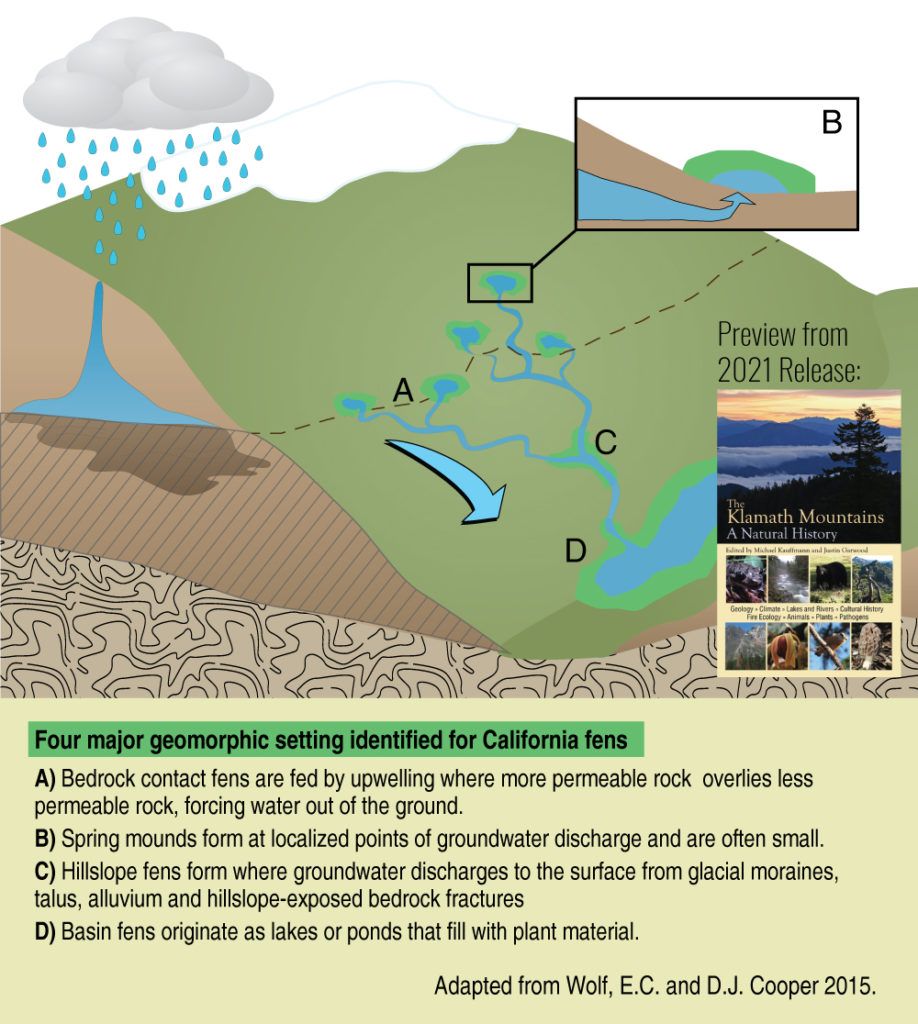…or Fabulous Fen Photographs
This article was influenced and inspired by Gordon Leppig’s California Wetlands Fremontia.
The slow movement of water through a fen builds, over long periods of time, to the formation of peatlands. The formation of peatlands requires a combination of processes that most commonly occur in flat areas in both tropical and boreal regions. Because of variable topography, geology, and even water chemistry in the mountains, peatlands are generally rare.
In temperate mountains, rare peatlands form over mellennia if perennial soil saturation, low mineral soil deposition, erosion rates, and net storage of soil carbon resulting from plant productivity complement each other perfectly. In arctic and alpine environments, the formation of peat is often associated with peat moss (Sphagnum spp.). In the temperate regions peatlands are usually dominated and formed by sedges (Carex spp.).


Fens are broadly defined as a type of peatland that form in concave depressions or on slopes with streams flowing through them. Bogs, another peatland type, are not influenced by ground or surface water but are instead hydrated atmospherically. By this definition, only fens occur in California—there are no true bogs. The Jepson Manual uses overlapping terms to describe these habitat types. These include bog, fen, sphagnum swamp, sphagnum bog, boggy site, and peatland. Taken together, these terms characterize oligotrophic (nutrient poor) peatlands, where the saturated vegetation is either quaking (it shakes when you traverse it) or floating (undulating when you traverse it).
The fact that fens occur in California is really quite exceptional when you consider they are here despite, rather than because of, our Mediterranean-type climate. Even with strong botanical influences from the temperate and subtropical regions, California fens are often dominated by perennials and shrubs with an affinity for northern boreal or arctic regions. Species like marsh cinquefoil (Comarum palustre), Labrador tea (Rhododendron columbianum), and Pacific reed grass (Calamagrostis nutkaensis) find their southern range extensions in the rare fens of California.
Cascades frogs in Klamath Mountain Peatlands
I have recently found myself exploring fens with Justin Garwood, co-author of The Klamath Mountains: A Natural History, as he conducts breeding surveys for Cascades frogs (Rana cascadae) in the Trinity Alps. For reproduction, of his species relies on the small ponds created in peatland fens as the snow melts. They lay their eggs almost immediately after snow recedes. His 18 year study (once his Master’s Thesis now a passion project) is a window into not only the amazing life cycle and ecology of a sub-alpine amphibian but also a study in the importance of these high-elevation wetlands.



